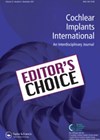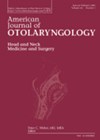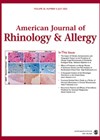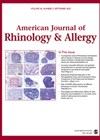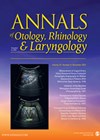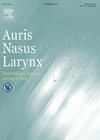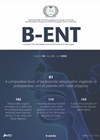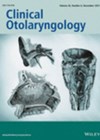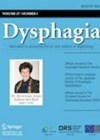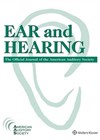
Journal Reviews archive for 2022
Music training for cochlear implant users
The ability to enjoy music is something that is important to most people and contributes to wellbeing, as well as holding cultural significance. However, the speech signal is generally prioritised for those with cochlear implants (and indeed hearing aids). Improving...
Does endoscopic sinus surgery for chronic rhinosinusitis improve COPD?
Chronic rhinosinusitis (CRS) can be associated with asthma, with a reported frequency of asthma in patients with CRS of up to 44%. COPD is another lung condition that can be associated with CRS. This longitudinal study reviewed the nasal and...
A new treatment for septal perforations?
Nasal septal perorations are notoriously difficult to close surgically and can be extremely symptomatic and debilitating for the patient. This paper describes the use of carvacrol (a monoterpene phenol of the family Lamiacaea which is often found in essential oils)....
How best to follow up a sinonasal cancer?
Sinonasal malignancies are rare tumours and, in the UK, are usually treated in tertiary treatment centres but may well be followed up long term in the patient’s local hospital, so advice on how best to manage these patients is invaluable....
Does pollution worsen inflammatory nasal problems?
This ambitious study, conducted over a period of four years, assessed 27,863 patients and compared levels of allergic rhinitis (AR) or chronic rhinosinusitis (CRS) with the levels of air pollution recorded, as assessed by levels of particulate matter (PM10). They...
To scan or not to scan?
This comprehensive review article seeks to establish how useful is MRI in the evaluation of patients with a history of smell loss or distortion. Interestingly, while some studies found the imaging unhelpful, one paper described found a 25% rate of...
Temporal bone drilling using artificial versus cadaveric specimens - does the specimen precipitate altered drilling techniques?
Hochman et al set an ambitious goal in their study analysing drilling strokes of eight otolaryngology residents (junior: PGY 1-3; senior: PGY 4-5) during temporal bone (TB) drilling practice using cadaveric and artificial specimens. Each trainee dissected one cadaveric and...
Impact of vestibular rehabilitation on patients with peripheral vestibular disorders
Vestibular rehabilitation is a widely used treatment for vestibular dysfunction. It can improve dizziness, fall risk, balance, and emotional status. However, some patients do not get benefit from vestibular rehabilitation. In this study, the authors assessed the impact of dizziness...
Can SNOT-22 predict the need for surgery?
In this prospective Belgian study, the authors looked at whether the baseline Sino-Nasal Outcome Test-22 (SNOT-22) was able to predict the need for surgery and localise the pathology of rhinology patients and healthy volunteers. A total of 66 healthy volunteers...
Adenotonsillectomy day-case discharge criteria: a systematic review
In this paper, Gowda et al review the literature aiming to answer a long-standing question regarding the criteria for same-day discharge of paediatric patients post adenoidectomy and/or tonsillectomy performed for treatment of obstructive sleep apnoea (OSA). Following PRISMA consensus, they...
How do objective ratings of swallowing compare with patient-reported dysphagia QOL measures in the head and neck cancer population?
Swallowing may be assessed by a comprehensive battery of tools including instrumental/objective assessments, clinician-rated measures and patient-reported measures. The authors of this paper use secondary analysis to explore concordance between videofluoroscopy and a patient-reported dysphagia quality of life (QOL) measure....
Is there an association with cognitive impairment and hearing loss in a developing country?
Hearing loss (HL) is the third leading chronic health condition among older adults. Most studies investigating HL and cognition have been performed in high-income countries. Risk factors for dementia (eg. hypertension, midlife hearing loss, obesity and physical inactivity) are more...

